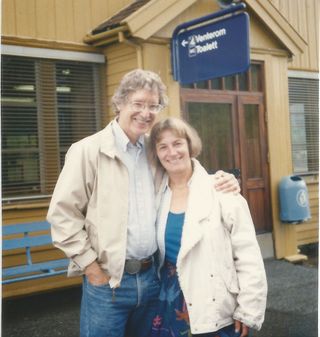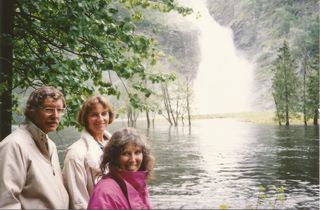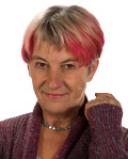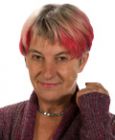Spirituality
In Praise of Psychedelics
How LSD changed one psychologist's life.
Posted January 10, 2020 Reviewed by Kaja Perina
Ken Ring was a pioneer of near-death-experience research. His first book, ‘Life at Death’ was one of the first and best, and more followed (Ring, 1980, 1984, 1998). I first met Ken in 1989, at a midsummer conference on NDEs in Flora, Norway—he more of a believer in life after death, me an ardent skeptic. Despite the gulf between our views, he invited me to join him for a few days exploring the fjords after the conference. We became firm friends and have stayed so ever since. He is now 84 and expecting to look down on me from his future life. I am 68 and expecting death to be the end. As he says—we shall see—or not see.

As with my own life, his professional, personal and spiritual lives have all been guided and inspired by psychedelics. He recently sent me a delightful account of his early experiences and has given me permission to post part of it here.
“Here’s the story:
It all began with two little purple pills. But they weren’t Nexium.
They were two LSD capsules, but I didn’t know that then.
I had better back up and explain.
In the early 1970s, just after I had turned 35, I was a newly appointed full professor of psychology with tenure at the University of Connecticut. And I was discontented. Not with my personal life, but with the field of social psychology in which I had been trained and hired to teach. I had recently published a critique of experimental social psychology, castigating it for the pursuit of merely clever and flashy research of the “can you top this” variety, which did not make me many friends. In any event, I was suffering from a sort of early career crisis, having become disenchanted with this domain of psychology.”
In March 1971, Ken read The Teachings of Don Juan by Carlos Castañeda (1968). He was, he says, “a typical Jewish professor—wedded to rational thought, committed to science and atheistic in my worldview,” with no interest in religion or mysticism and no experience of psychedelic drugs. But he was excited by Castaneda’s mescaline-induced discussion of “seeing the crack between the worlds.” He asked a colleague whether he could provide him with some mescaline and the answer was "Yes."
“By then it was early May. The semester was just about over. He told me not to read anything further on the subject and just come to his apartment on the following Saturday.
That day turned out to be a rare beautiful sun-splashed day with everything beginning to bloom. My colleague lived at the edge of a forest. He suggested that I take the mescaline in his apartment, wait just a bit and listen to music and then go outside and into the nearby woods.
And then he gave me two purple pills to ingest.
I did not know my colleague well, and as I was soon to find out, he was not only impish, but embodied the trickster archetype. While he gave me to believe I was taking mescaline, he had actually given me 300 micrograms of LSD.
I will not bore you with an account of the next twelve hours. Suffice it to say that all the pillars of my previous ontological categories soon began to crumble into dust. I had the undeniable feeling I was seeing the world with pristine eyes as it really was for the first time. At the time and afterward, I realized that this was the most important and most transformative experience of my life—and nearly fifty years later, I still feel the same way. Nothing could ever be the same.
The one portion of the experience I will allude to here—because it eventually led me to the study of near-death experiences—took place when I was sitting on a log near a stream in the woods. I don’t know how long I was there, but at some point for a moment outside of time I—except there was no “I” any longer—experienced an inrushing of the most intense and overwhelming rapturous love and knew instantly that this was the real world, that the universe, if I can put this way, was stitched in the fabric of this love, and that I was home. However, again I have to repeat: There was only this energy of love and “I” was an indissoluble part of it, not separate from it.

I spent the next three years trying to come to terms with what had happened to me.
Before this, I had been very active as a young professor—I had published a fair amount, I had been promoted pretty fast and I was the head of my division of social psychology and served on important departmental committees, etc.
Afterward, I didn’t publish anything for three years. During that time, I was engaged in a spiritual search for understanding, and there were consequences.
My wife could no longer relate to who I was and to the kind of company I was keeping, which eventually led to a very painful and traumatic divorce. My departmental colleagues didn’t know what to make of me either. A very distinguished clinical psychologist, who had always taken an avuncular interest in me, put his arm around me one day and said, “We’re just waiting for you to come back to us, Ken.”
I never did.”
In 1972, he read “The Experience of Dying,” by the psychiatrist Russell Noyes. This article recounted several examples of near-death experiences, though that term had not yet been invented. These affected him deeply, as they described revelations similar to those he experienced on his LSD trip. Then when he attended a conference on transpersonal psychology, everything started to come together for him.
He returned to his university on fire, putting together a graduate course on transpersonal psychology that attracted an unusual assortment of students and even professors, as well as a Catholic priest, and from their reactions, he realized how powerful these stories could be. This did not please his colleagues, but since he was a full professor, “there was little they could do but shrug their cold shoulders at me or look at me somewhat sourly as if I were guilty of having left “real psychology” behind as well as my senses. They were, of course, right about that.”
He began spending time with key people in the developing field of transpersonal psychology, such as Stan Grof, Joan Halifax, Charley Tart, Jim Fadiman, Jean Houston, and Stan Krippner. He continued his study and personal explorations of what Charley Tart had famously called “altered states of consciousness” (Tart 1972). And his “spiritual adventures” led him to the study of near-death experiences.
Then one day in 1976 he learned about a book brought out by a small publisher in Georgia entitled Life After Life, written by psychiatrist Raymond Moody, Jr (1975). It was, of course, the book that launched the term “near-death experiences.” By the next year, it was picked up by Bantam Books and became an international bestseller. He goes on …
“I am holding a copy of the book now and I see all the excited marginal notes, exclamation points and underlinings that I made at the time. What I remember thinking was:
“This is it!”
I knew that I wanted to find a way to do research that would help me understand what had happened to me during my LSD trip—and that my own spiritual explorations weren’t sufficient for me. I had always enjoyed doing research and needed to find a way to satisfy that need of mine. I also knew that I was not cut out to be a “druggie,” and that for a multitude of reasons psychedelic research was not an option for me. And from reading Moody’s book, I could see, with increasing clarity, that his near-death experiencers had indeed encountered the same realm—and so much more—that had so shattered me. I could learn from them. They would be my teachers.
You see, I was never interested in death per se, much less with the question of life after death. What animated me and drew me to study near-death experiences was my desire to understand the state of consciousness and the transpersonal domains that I had begun to experience when I took LSD. Even then, of course, I could understand that NDEs were a kind of transpersonal experience in their own right since, according to Moody’s account of them, they clearly transcended space, time and ego. Thus, researching NDEs, I immediately saw, could marry my spiritual search with my work as a transpersonal psychologist.
The rest, as the risible cliché goes, is history—for me, the personal history going on two score of years now of studying, researching, thinking and writing about NDEs. There’s no need to recapitulate that long sojourn in NDE land here. All I really wanted to express was how an adventitious LSD experience was the critical turning point for me that led, seemingly inevitably, to my life’s work as an NDE researcher, which indeed has been the blessing of my life. And for that reason alone, though to be sure not the only one, I will always feel supremely grateful for what I was able to see and understand on a certain day in May in the woods of Connecticut.”
All I can add is “Thank you, Ken, for telling your wonderful story”. My work, too, has been inspired by psychedelics (Blackmore, 1993, 2005). I take them rarely, as do most serious psychonauts and researchers, for one trip can provide years of spiritual and intellectual inspiration. These precious substances remain illegal in most countries but at last, the tide is turning (see e.g. Pollan 2019) and we may yet begin to see them take their rightful place in a richer psychology.
References
Blackmore, S. 1993 Dying to Live: Science and the Near Death Experience, London, Grafton
Blackmore, S. 2005 I take illegal drugs for inspiration. The Telegraph, 21 May, 17-18
Castaneda,C. 1968 The Teachings of Don Juan: A Yaqui Way of Knowledge, University of California Press
Moody,R.A. 1975 Life after Life, Atlanta, Ga, Mockingbird
Noyes,R. 1972 The Experience of Dying Psychiatry 35 174-184
Pollan, M. 2018 How to Change Your Mind: What the New Science of Psychedelics Teaches Us About Consciousness, Dying, Addiction, Depression, and Transcendence, Penguin
Ring,K. 1980 Life at Death: A scientific investigation of the Near-Death Experience New York, Coward, McCann and Geoghegan
Ring,K. 1984 Heading Toward Omega: In Search of the Meaning of the Near-Death Experience New York, Quill
Ring, K., & Valarino, E. E. (2006). Lessons from the light: What we can learn from the near-death experience. Moment Point Press.
Tart, C. T. (1969). Altered states of consciousness, Wiley




